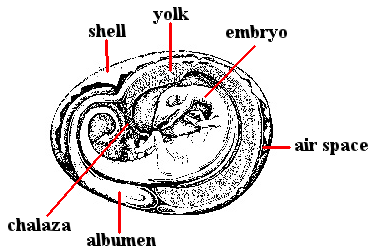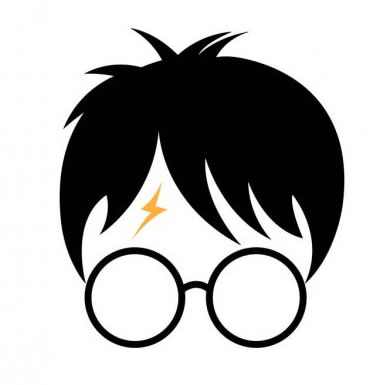Notes and tails about dragons
Note and other bits about dragons. Collections of Beasts as told by the divisions of magical creatures. This book is categories XXX ;)
Last Updated
05/31/21
Chapters
13
Reads
3,983
Introduction And Early Life
Chapter 1
Introduction
Dragons are giant winged, fire-breathing reptiles that are
widely known as terrifying yet fascinating creatures. They are found all over
the world and are frequently referred to in Asian and medieval European folklore.
They are able to fly and breathe fire through their nostrils
they are one of the most dangerous and hardest to conceal creatures in the
wizarding world. The ministry of magic has classified them as XXXXX, known
wizard killers that are impossible to train or domesticate. Despite how
dangerous they are, there are people who are trainer to work with them, called
dragon keepers, or dragonologists and any wizard who sells or trades dragon
eggs are referred to as dragon dealer and is in fact an illegal activity.
Dragons are
generally highly aggressive towards anything, even wizards, and will sometimes
attack humans without provocation. it also depends on the nature of the dragons because some dragons tend to have a peaceful nature rather than aggressive.
Early Life Of A Dragon
A dragon's life is a very long one compared to humans. On the average, dragons live 1,200 human years.
every dragon starts off as an egg. A Dragon's egg looks like a chicken egg but it is large, approximately 12 x 18 inches.
The mother breathe fire on their eggs to keep them warm which is why if you are to take care of a dragon egg place on the fire place until it is time to hatch. Dragon Breeding for Pleasure and Profit suggests,
that you are to feed a baby dragon a bucket of brandy mixed with
chicken-blood every half hour.
The mating phase
Dragons usually lead a solitary life until they meet their life-long mate during their mating flight ritual. A female will mate only 1 to 4 times in her life. It is a grand site to see. When a female dragon is ready to mate. She will sound a resonating "mating-call" to all the mature males around the area. She will then fly as fast, and as high as she possibly can. The female can easily out-fly any male, due to her weight, and wingspan. Only the strongest and fastest of the males will catch her. When a male dragon finally catches the female at the climax of their flight, they will literally hang for a second in mid-air with the male wrapping his tail and wings tightly around the female's, and grasp her with all four claws. The female will follow suit as they begin a free-fall which is the mating session. Falling fast, the mating only lasts a few seconds, and both dragons will break off just before crashing into the ground, and glide together to the female dragon's cave to prepare their nest.
Nest building
The nest building begins the same day as the mating takes place. Both the male and female dragon add to building their nest. The nest materials can consist of woven tree branches, and fresh leaves intertwined with gold and jewels. The floor of the net consists of flat coins that are melted into a bowl by the dragons breathing fire and melting them into the woven branches. Dragons apparently like a very beautiful nesting area. The nest will be built upon part of the two dragon's combined treasures. It is theorized when the dragons sit upon the nest, the body heat will warm the gold and keep the nest warm even when the dragon is not directly on the eggs. Building the nest will be slow, it takes roughly a year and a half, human years to build it.
Laying of the egg
After 2 years of gestation, a female will lay several (1-6) ovoid leathery-hard eggs, called a clutch. The ratio of male to female hatchlings is 3 to 1. During the nesting, the male and female will take turns either finding food, and keeping the eggs warm. The dragon hunting will bring an elk, or some other large animal back for both to share in the cave. After both have their fill, the carcass is tossed over the edge of the mountain where the various animals near the lair will get their meal. A tell-tale sign that a dragon-cave is nearvis the fact that there are a large number of bones near a mountain.
The Hatching
After 2 months of nesting, the baby dragons emerge from their eggs. Each baby dragon has an egg-tooth, which is a sharp, pointed bone at the front of their snout. This is used to break out of the shell. When the first dragon starts to emerge and cry, it urges the other baby dragons to hatch. Dragon's hatch ferociously hungry, and if are not fed immediately after hatching, they will eat the yolk and albumen (white part of an egg). If not fed immediately after this they will go after their siblings. It is very important for the parents to know when the dragons are ready to hatch so they can have fresh meat to satisfy their sons and daughters. This first feeding bonds the newly hatched dragons to their parents. After the hatching, both adult dragons fiercely guard their hatchlings. One dragon will always be awake to keep watch over the nest, until the newly hatched dragons can defend themselves.
The Wyrmling
A baby dragon when born, weighs 80-odd pounds and its about 6 feet in length. The wyrmling is born able to see, and hear. They also have a full set of razor sharp baby teeth. Their wings are too small and weak to fly. The tiny scales covering their body are very soft when first hatching, but will harden within a year. Some species of dragon are born with an innate ability (some say magic) such as to become invisible at will. The dragon is considered a wyrmling from hatching until age 15.
Development Of A Dragon Before Maturity:
- six months, The dragon's first fire breaths, usually accompanied by thick grey smoke.
- Twelve months, the ability to fly is normally developed
- two years, the dragon will be fully mature and is ready to live on its own.
The Growing period
At age 40, the dragon is considered a juvenile. At this age, the juvenile dragon will test its flying abilities, and will make its first flight. The mother and father dragon will teach the dragons on how to take off from a cliff, how to use the thermals, and how to land. There is some natural instincts that the dragons have when first learning to fly, such as how often to flap the wings to stay in the air. The juvenile dragon will revel in the act of flying, and will be in the air most of the time during the next few years to keep gaining wing length and strength in the flight muscles.
At age 60, the dragon is now considered an Young Adult. He has learned all the aspects of flying, including how to take off from flat land which is most difficult for a young dragon, due to the immense force needed to do so. Around age 65 the dragons leave their hatching grounds to find their own caves to take as their own. They prefer to own places that are on sheer cliff faces, with a large enterance, and large living area, with smaller caves and tunnels weaving in and out of the cliff-face.
At age 90, the dragon is almost fully grown and is considered an Adult Dragon. The dragon will search miles around its own territory, and learn every nook and cranny about the area. The adult dragon will mark its territory by secreting a substance, and spitting it on rocks, and trees clearly defining his circular area around his cave. All dragons have an incredible sense of smell and this secretion is a beacon that another dragon is near. During this time, adult dragons will search out an elder dragon to learn magic. An Elder will teach the adult dragon the ways of the past through magic and knowledge.
Around age 100, the dragons will have a hormonal change within their bodies and will get urges to mate. Females will change to a brighter shade of their regular color during the mating season due to this change. The males will notice this change and get riled up so much as to fight with other males that are ready to mate as well. These fights are never fatal, but sometimes do cause some serious damage to the males, especially the wing membrane, which is the most vulnerable part of a dragon's body. The fights usually consist of dragons diving towards each other and butting heads, and swiping with claws on the tough scales of the chest. When the male dragons hear the females mating call, the dragons at once take to the skies to find her, and the chase is on!
At age 150, the dragon is now a Wyrm. This age is a continuing cycle of learning knowledge, learning magic, and raising a few more clutches of young. And of course, hoarding as much treasure as they can find to fill their caves. The pair of dragons will live together for the rest of their lives together even after all matings have finished.
The Great Wyrms
If a dragon lives past the age of 900 years, they are considered a Great Wyrm, and an Elder of the dragon community. All dragons will hold a great meeting to admit the new Great Wyrm to the society of dragons. Great Wyrms are highly regarded for their knowledge, their magical ability, and their prime wisdom. Elders are responsible for the teaching of past history of dragon kind, history of the world, and magic to the adult dragons. If there is an emergency that includes the dragon community, the Elders will call a grand-meeting to discuss the problem and what to do about it. These are the only two times in a dragon's life that they will see so many of their kind in one area.
End of the life cycle
A dragon rarely lives past 1,500. When the time comes, the dragon realizes his life-cycle has come to an end. He will gather all Great Wyrms at the rim of a great volcano. All the Great Wyrms will howl a great song named "The Passing Song". This song will continue for a full half hour, and can be heard for 300 miles around. This announces the passing of an Elder. Once the song is heard by Adult Dragons, they will howl the same song for all to hear until all dragons on a world will understand they have lost a great member of their community. During the song, the dying Great Wyrm will circle the live volcano and then dive straight down into the lava to give himself back to the earth that spawned him.
Books about Dragons Care:
- Dragon Breeding for Pleasure and Profit.
- From Egg to Inferno: a Dragon-Keeper's Guide.
- Men who love Dragons Too Much.



